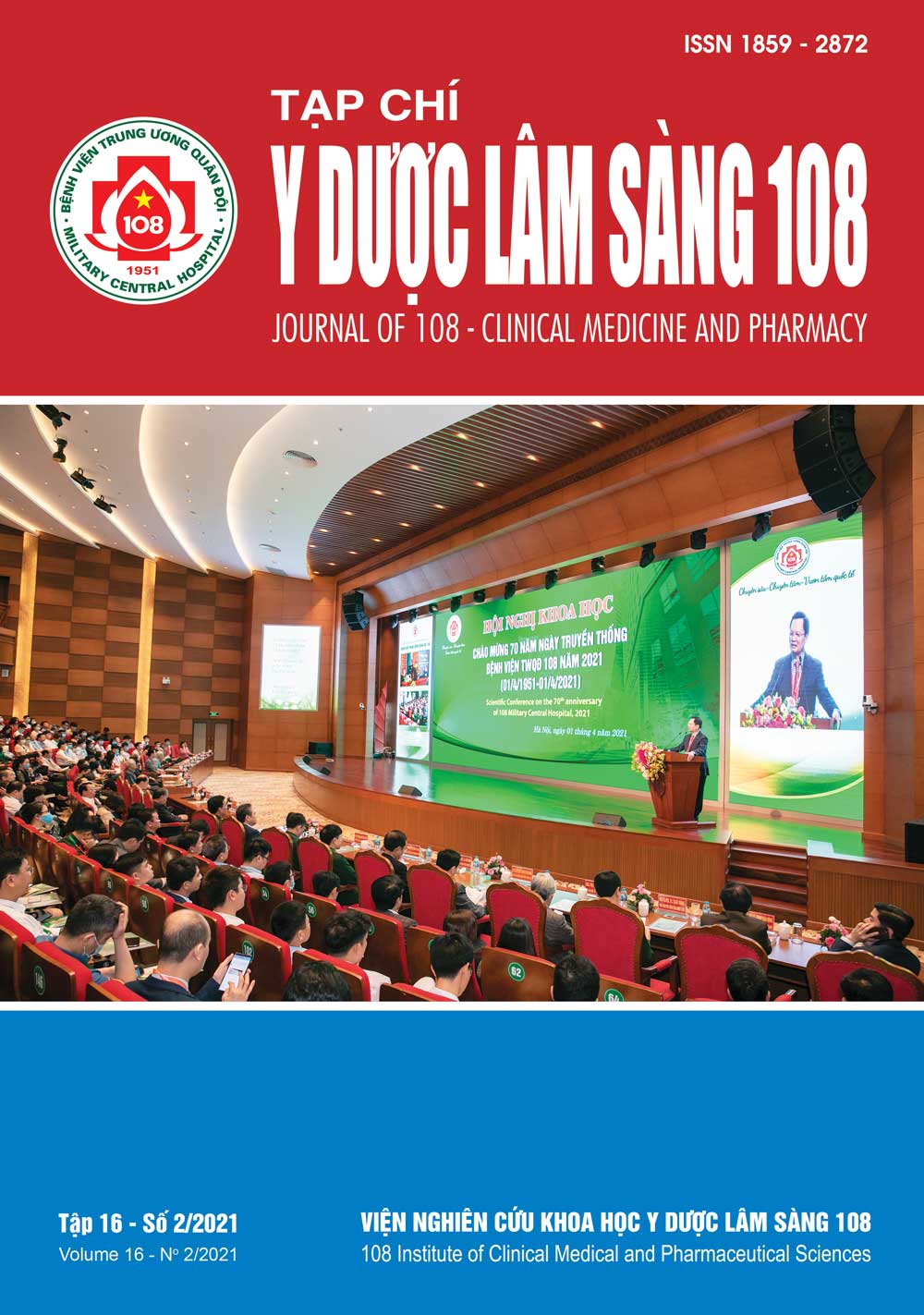The use of colistin in patients undergoing continuous renal replacement therapy at 108 Military Central Hospital
Main Article Content
Abstract
Objective: A survey of colistin use in patients undergoing continuous renal replacement therapy (CRRT) at 108 Military Central Hospital. Subject and method: We implemented a descriptive, retrospective study in 45 medical records with simultaneous use of colistin and CRRT at 108 Military Central Hospital from January 2018 to May 2020. Result and conclusion: 66.7% of patients were 60 years of age or older. The patients mainly received treatment in ICU (84.4%). There were 57 CRRT sessions on 45 patients. The reason for appointing CRRT was mainly septic shock (86.0%). The most common infectious agent was A. baumannii (46.7%). Some strains of E. coli, A. baumannii and K. pneumoniae had MIC ≥ 4mg/L. The most common bacterial infection was pneumonia (97.8%). 39/45 patients received colistin loading dose. The average colistin loading dose was 6.5 ± 1.9MIU. On days of CRRT, the most common maintenance dose regimen was 2MIU every 8 hours. More than half of maintenance doses in the days outside the CRRT sessions were lower than recommended. The proportion of patients with complete response/partial response, clinical failure to colistin regimens was 35.6% and 64.4%, respectively. It is necessary to develop a protocol to completely document patient characteristics as well as CRRT parameters, at the same time, optimize the dose of colistin according to the individual patient and according to CRRT sessions.
Article Details
References
2. Nguyễn Thu Huyền (2020) Triển khai hoạt động của dược sĩ lâm sàng vào việc sử dụng colistin tại Bệnh viện Trung ương Quân đội 108. Đại học Dược Hà Nội.
3. Bugge JF (2001) Pharmacokinetics and drug dosing adjustments during continuous venovenous hemofiltration or hemodiafiltration in critically ill patients. Acta Anaesthesiol Scand 45(8): 929-934.
4. Golper TA, Marx MA (1998) Drug dosing adjustments during continuous renal replacement therapies. Kidney Int Suppl 66: 165-168.
5. John Kellum, Rinaldo Bellomo et al (2016) Continuous renal replacement therapy. Pittsburgh Critical Care Medicine (2 ed.). Oxford University Press.
6. Leuppi-Taegtmeyer AB, Decosterd L et al (2019) Multicenter population pharmacokinetic study of colistimethate sodium and colistin dosed as in normal renal function in patients on continuous renal replacement therapy. Antimicrob Agents Chemother 63(2):e01957-18.
7. Mohamed Ami F, Karaiskos Ilias et al (2012) Application of a loading dose of colistin methanesulfonate in critically ill patients: population pharmacokinetics, protein binding, and prediction of bacterial kill. Antimicrobial Agents and Chemotherapy 56(8): 4241-4249.
8. Nation RL, Garonzik SM et al (2017) Dosing guidance for intravenous colistin in critically-ill patients. Clin Infect Dis 64(5): 565-571.
9. Schetz M, Ferdinande P et al (1995), Pharmacokinetics of continuous renal replacement therapy. Intensive Care Med 21(7): 612-620.
10. Spapen H, Laethem J et al (2019) Treatment of ventilator-associated pneumonia with high-dose colistin under continuous veno-venous hemofiltration. J Transl Int Med 7(3): 100-105.
11. Tsuji BT, Pogue JM et al (2019) International Consensus Guidelines for the Optimal Use of the Polymyxins: Endorsed by the American College of Clinical Pharmacy (ACCP), European Society of Clinical Microbiology and Infectious Diseases (ESCMID), Infectious Diseases Society of America (IDSA), International Society for Anti-infective Pharmacology (ISAP), Society of Critical Care Medicine (SCCM), and Society of Infectious Diseases Pharmacists (SIDP). Pharmacotherapy 39(1): 10-39.
12. Wallace SJ, Li J et al (2012) Interaction of colistin and colistin methanesulfonate with liposomes: Colloidal aspects and implications for formulation. J Pharm Sci 101(9): 3347-3359.
 ISSN: 1859 - 2872
ISSN: 1859 - 2872
